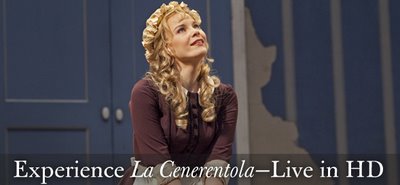Il Trovatore, Met Opera, Friday 8th May 2009 8pm.
Conductor - Riccardo Frizza
Manrico - Marco Berti
Count De Luna - Zeljko Lucic
Leonora - Hasmik Papian
Azucena - Mzia Nioradze
Ferrando - Burak Bilgili
Inez - Laura Vlasak Nolen
This David McVicar opera production was a major improvement to the Graham Vick fiasco of 2001 yet it still had its weaknesses and one shocking event which I believe is beyond any good taste (see below).
Utilising the full revolve of the Met stage, the opera opened, like Don Giovanni, to an enormous wall with attached ‘full-height’, vertiginous stairway-to-heaven with a landing and a door mid-way. This became the backbone of the various scenes, front, side and angled. The sets were not fully realistic but stylised using rough rocks, a portcullis, monastic items, crucifix, anvils and enormous outdoor stake for burning witches.
The cast members were all excellent with the artists warming into their roles and vocal confidence improved in each of the 4 acts. There was one intermission between act 2 and 3 which added to the task for the principal singers.
Ms Papian as Leonora paced herself carefully for this long role but was unassailable by the last act where her D’amor sull’ali rosee and Miserere were followed by the fiendish cabaletta ‘Tu vedrai che amore in terra’ to great acclaim. Ms Nioradze was strong and dramatically credible as the gypsy witch.
As Manrico Mr Berti was excellent. His almost impossible task of “Ah si ben mio ..”, followed by “Di quella pira” was well executed (one verse of the latter). And there were cheers all round at his capable and exciting terminal high C.
At one point Mr Lucic as De Luna pulls out his sword, grasps it with his left hand and runs the blade through his clenched fingers to the sight of spurting blood which then haemorrhages visibly for the remainder of the scene. On his exit he wipes a red stain onto the castle wall. I found the unexpected episode to be shocking and the audience seemed to gasp and recoil as it was done. It was most distracting and unnecessary, bearing little relation to the story-line (such as it is). If it derived from the libretto (which I doubt) it also distracted from the words, music and subtitles. Blood brothers may be one thing, but self mutilation on stage is quite another.
Lucic’s ‘Il balen’ was a high point vocally along with the chorus and cabaletta following.
Mr Bilgili and Ms Nolen as Ferrando and Inez both had substantial and important voices which would have eclipsed lesser singers in the major roles.
The anvil chorus deserves special commendation, being the only realistic anvil use on stage I have seen. The chorus members were at one, strong-voiced and sympathetic to the piece. By chance the same week the Met was also performing the only other anvil song I know from opera. The first act of Wagner’s Siegfried makes quite a different, energetic workman‘s song - first performed 20 years after Verdi’s version.
Overall a very enjoyable performance … but a production which shows just how difficult it is to present this opera without major breaks and clunky scene changes. I vote for two or even three intermissions as Verdi intended.
Comments by Andrew Byrne ..
The Big Apple in April 2024 ...
-
We are here in New York City for the month, well settled into our digs in
Hell’s Kitchen, 54th and 9th near the USS Intrepid on the Hudson, not far
from ...
4 days ago



